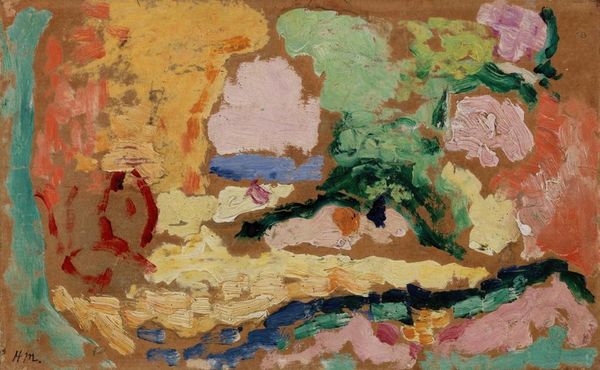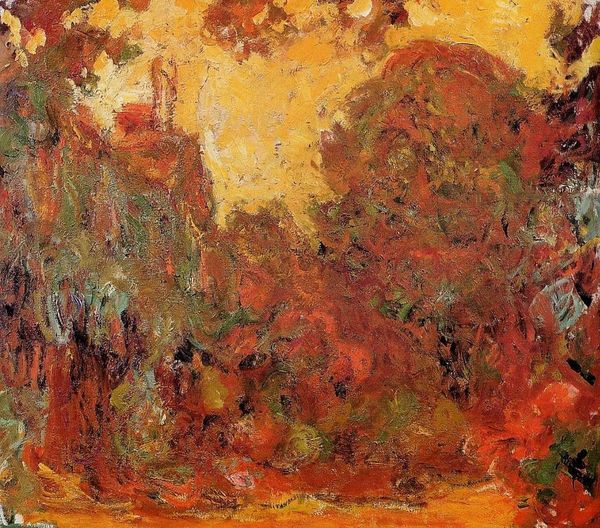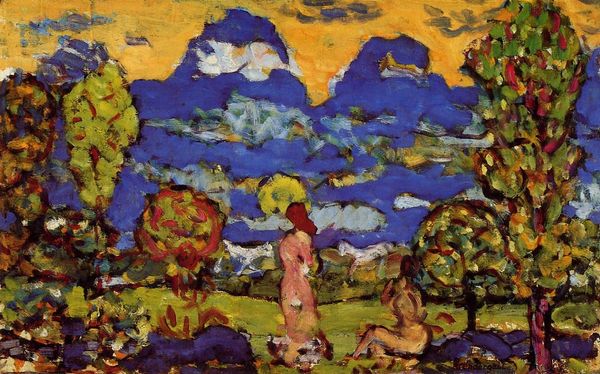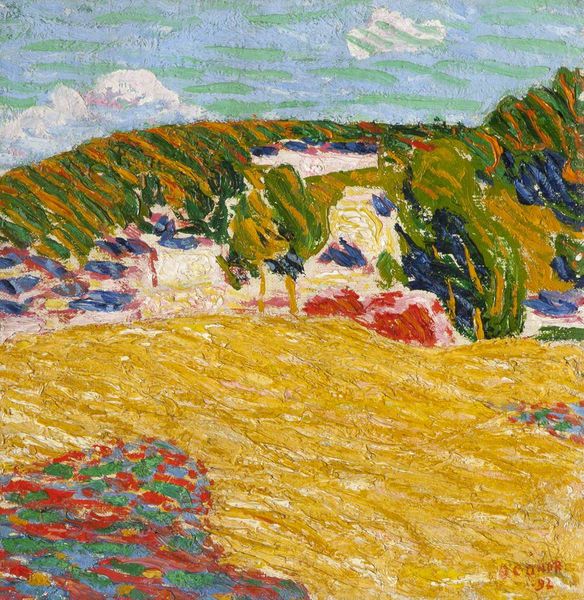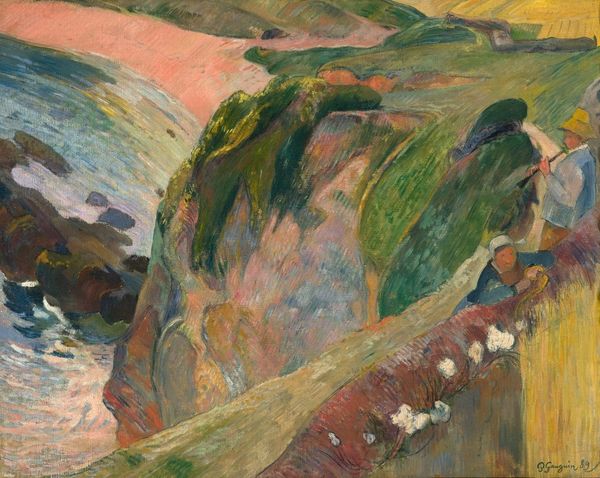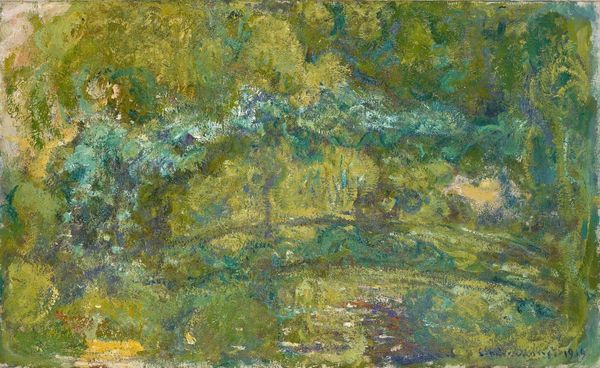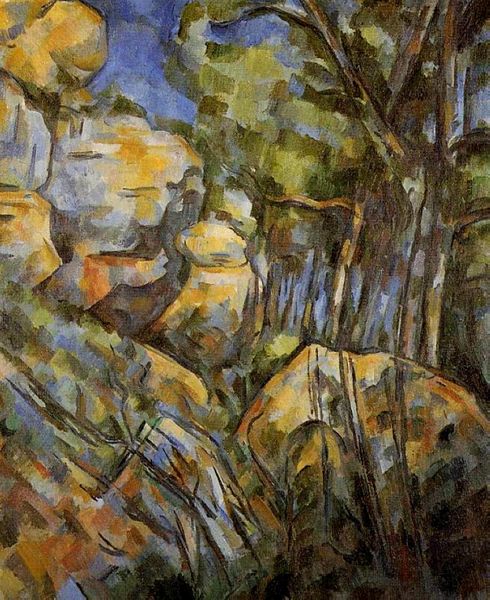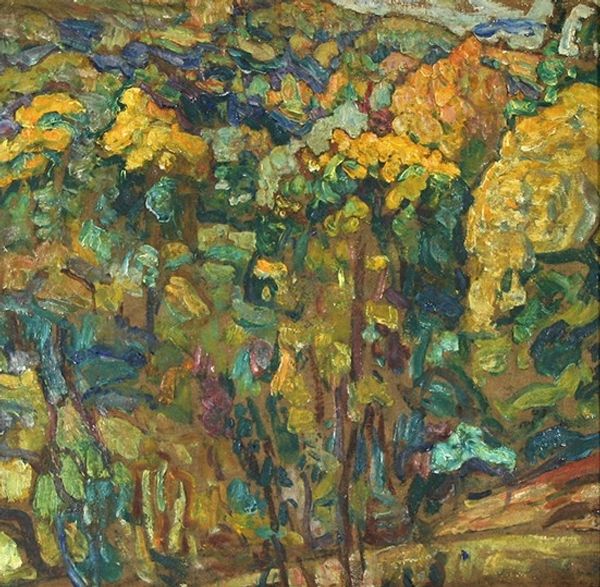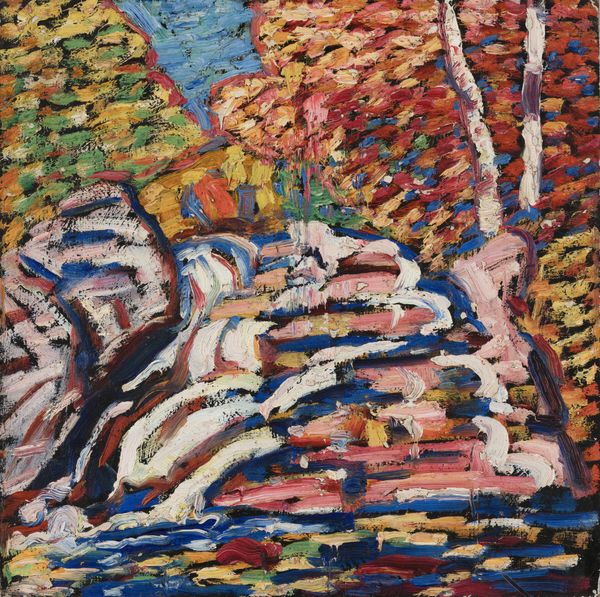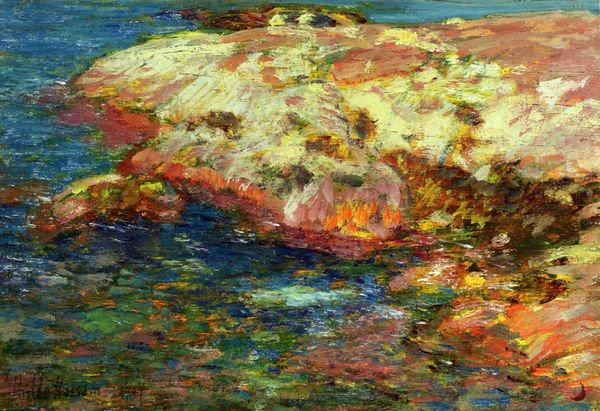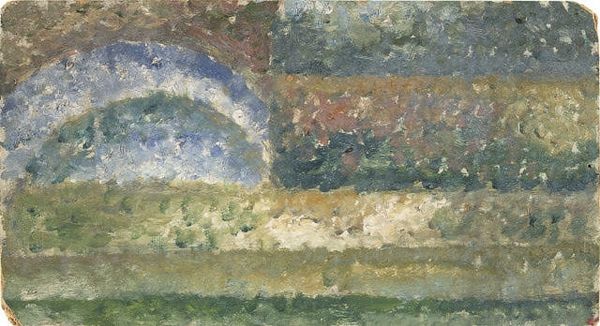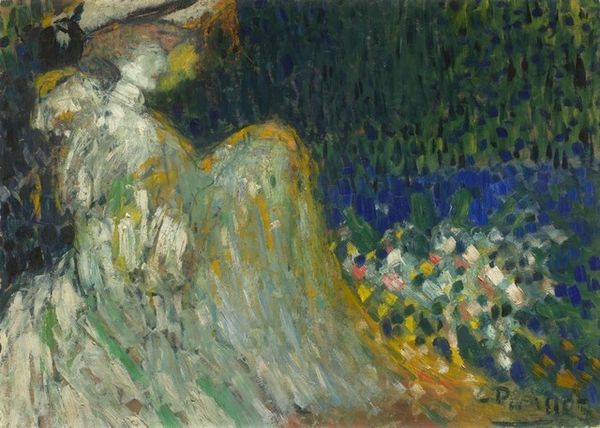
painting, plein-air, oil-paint
#
cliff
#
abstract painting
#
painting
#
plein-air
#
oil-paint
#
landscape
#
impressionist landscape
#
rock
#
post-impressionism
#
watercolor
Dimensions: 25 x 19.5 cm
Copyright: Public domain
Curator: Maurice Denis painted this canvas, titled "Rocks at Pouldu," in 1892. What strikes you immediately about its arrangement, compositionally speaking? Editor: A sense of the primeval. The textures and layering evoke something primordial and timeless. But those colors, somewhat muted, give me the feeling of an impression fading, like memory itself. Curator: Yes, there’s a clear movement away from mimetic representation. The subject, rock formations in Brittany, becomes almost secondary to the arrangement of color and shape. What significance do you read in his choice of rendering, in the forms themselves? Editor: Rocks carry so much weight symbolically; resilience, steadfastness. He has made the rock face look porous and soft and he renders its rugged nature with this subtle tonality and light; I wonder if he’s alluding to a dialogue between power and vulnerability? I sense that in this arrangement. The suggestion of a reclining figure, by the way, adds a distinct psychological layer, it's very striking here! Curator: Indeed, consider the Symbolist leanings prevalent at the time, the image operates on a plane of subjective experience. Denis was greatly influenced by Gauguin's flattening of pictorial space; he renders volume here without reliance on traditional shading methods. This piece stands as a statement about the properties of paint, in itself. Editor: Right! Because stone often represents the eternal or sacred, that implied figure suggests humanity finding a fragile place of rest, even grace, against a backdrop of geological permanence and, one could even say, inevitability. He's humanizing nature with that rendering. Curator: He certainly is employing a specific language, visually speaking. His simplification, even abstraction, serves to heighten the work's evocative power. The painting's reduced palette and non-naturalistic coloration speak to its purpose as something more than merely representational. Editor: So, the visual codes allow the eternal dialogue to be renewed across each new viewing. Thanks, that helps unlock something in this for me. Curator: And for me, it’s the spatial flattening as an aesthetic tool of modern art, that continues to resonate and define abstraction.
Comments
No comments
Be the first to comment and join the conversation on the ultimate creative platform.
